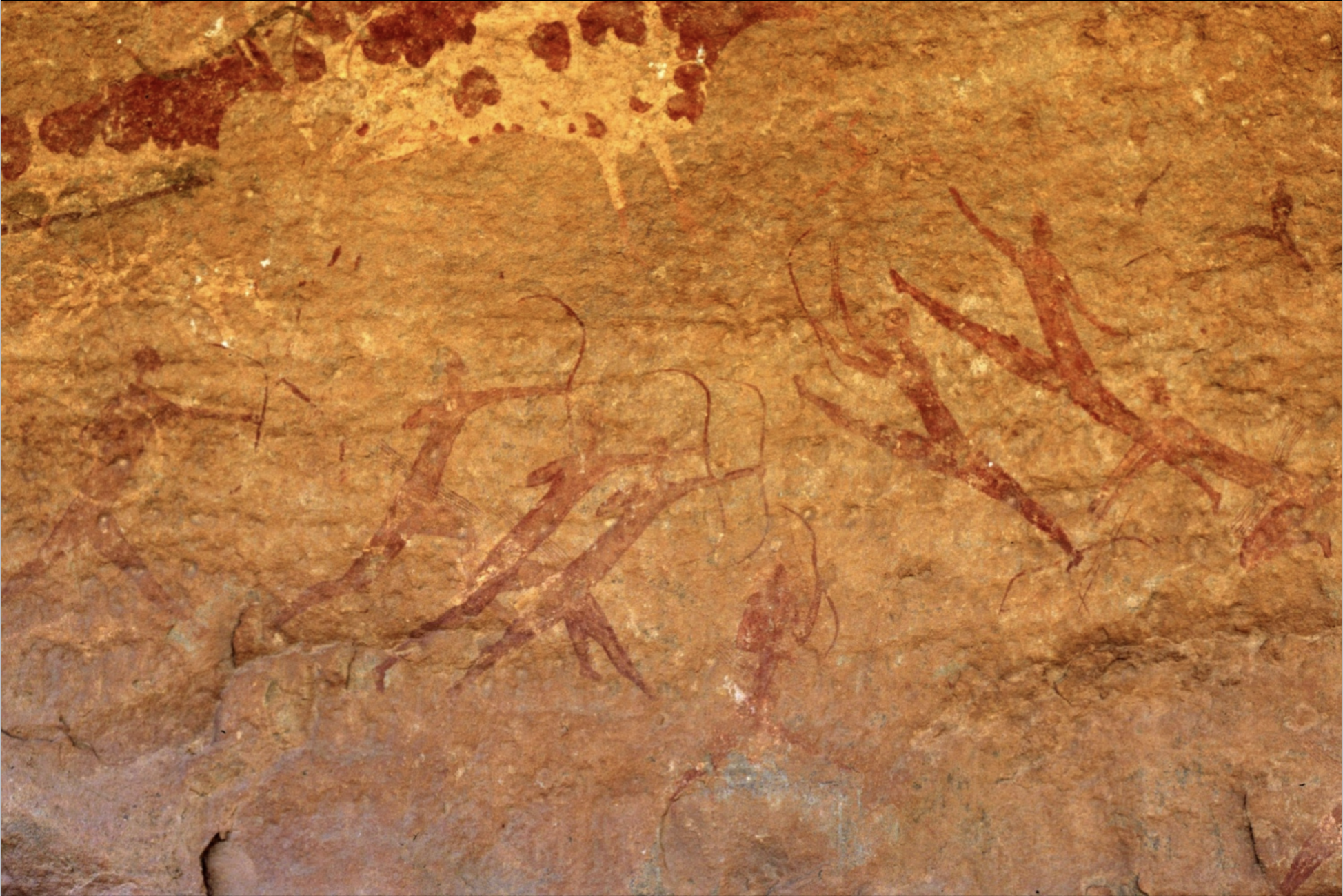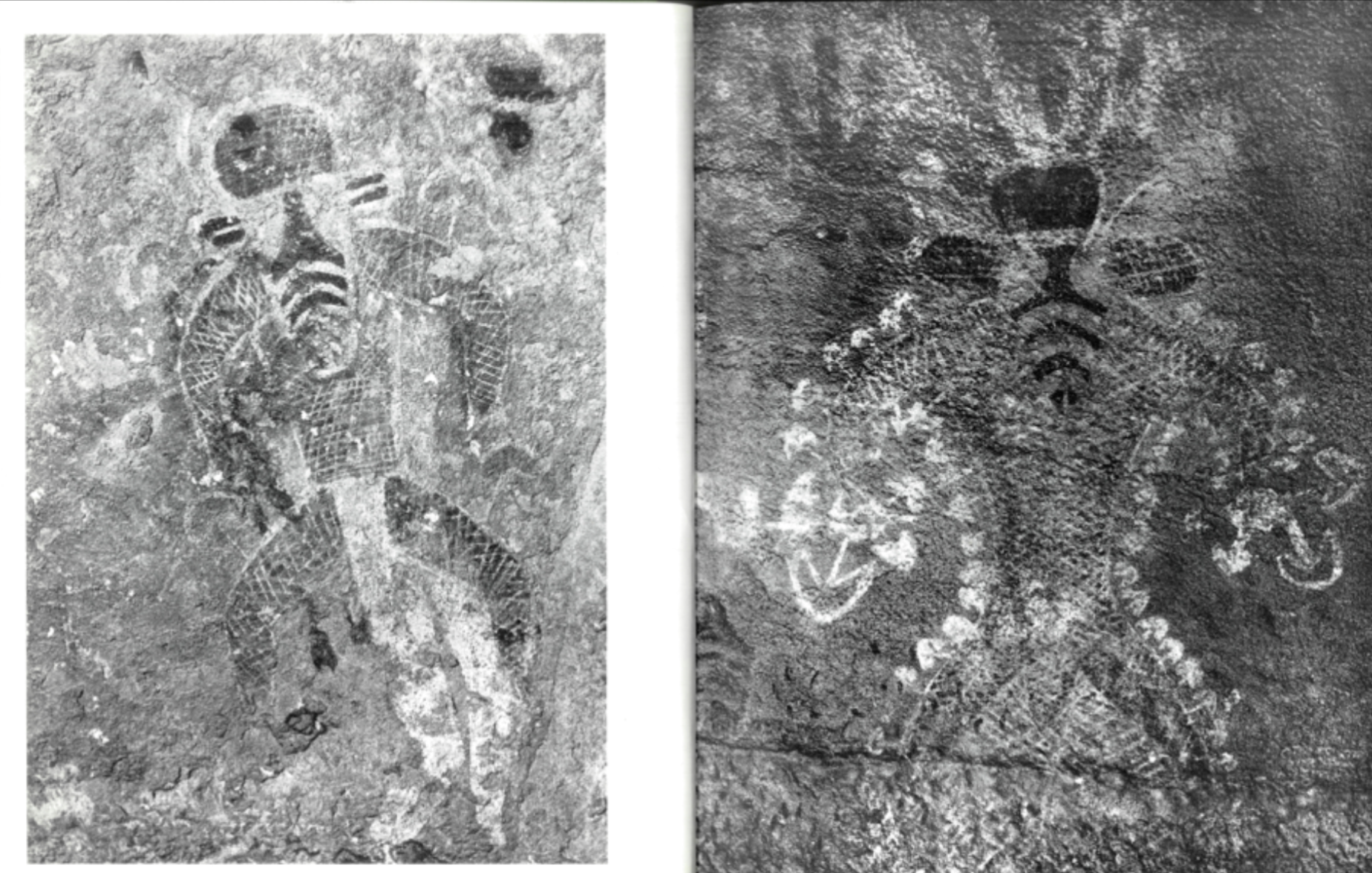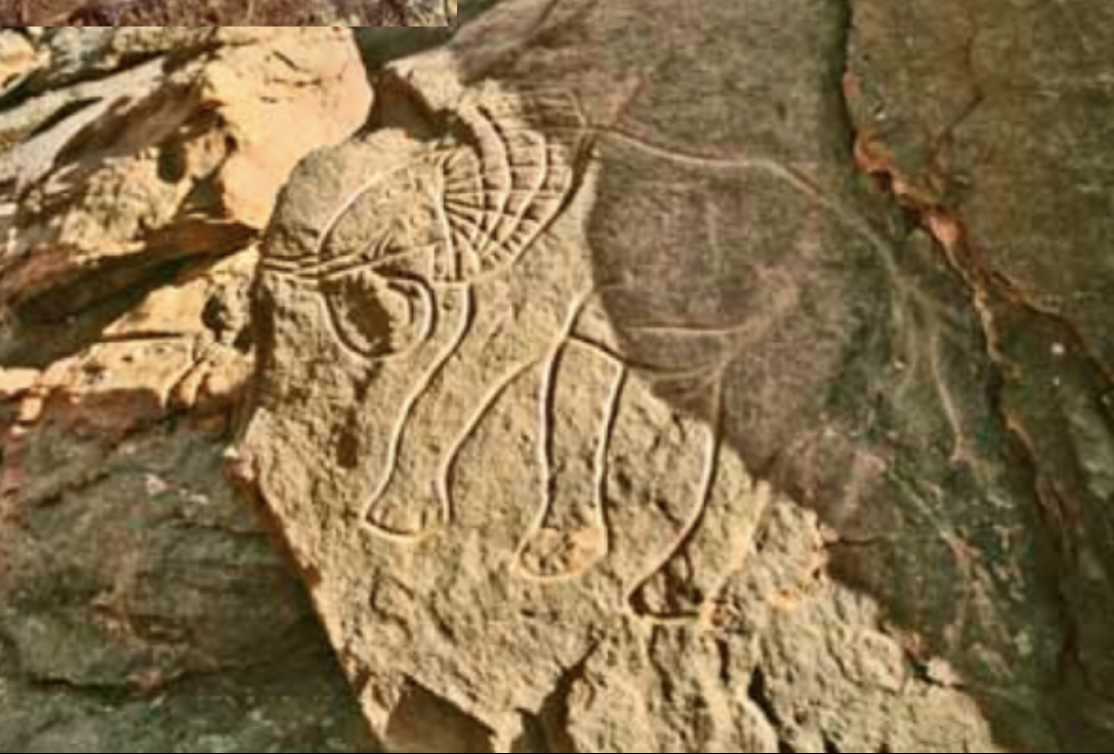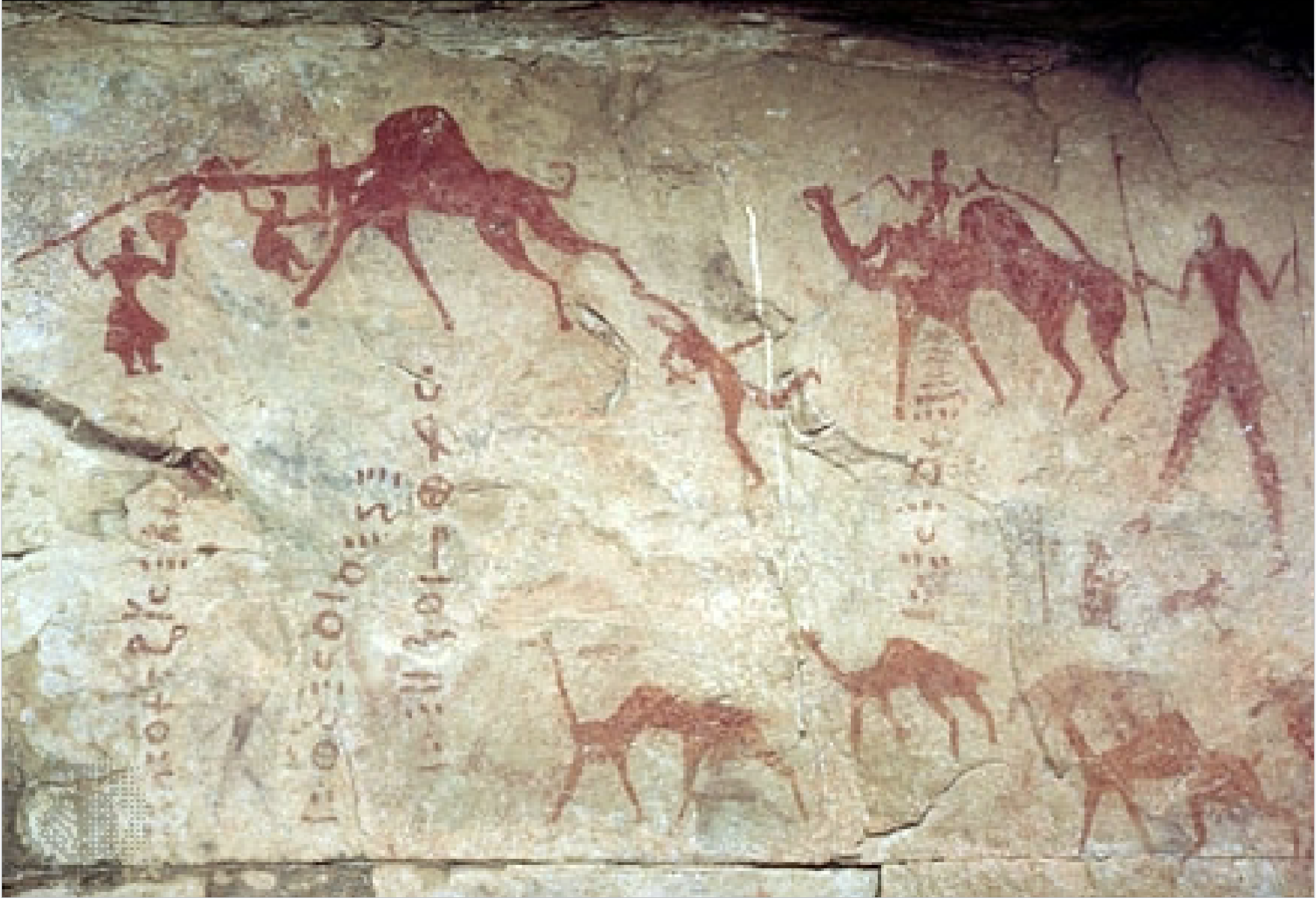2 - Tassili n' Ajjer, Algeria
1/19
Earn XP
Description and Tags
Name | Mastery | Learn | Test | Matching | Spaced |
|---|
No study sessions yet.
20 Terms
Tassili n’ Ajjer, Algeria (Periods/Cultures/Kingdoms)
Prehistoric Cave Art (12,000BCE - 1,000BCE)
Archaic Style
Large Wild Fauna Period
Prehistoric Cave Art (12,000BCE - 1,000BCE) notes
encapsulates almost all of North Africa, in and around the Sahara Desert
very rocky and largely uninhabitable
teople passed through before the Great Desecration, but very few people actually lived there
there is archaeological evidence of human presence, but no architectural remains or burial sites
3 theories as to why people made paintings and carvings
Ritual Use
people may have interpreted the dramatic change of landscape as the spirit world (?)
Trade Routes
the sites could’ve been safe campsites and the paintings could be a means of communication for future travelers to warn them of dangerous animals and such
Sympathetic Magic:
when you do something like creating artwork in the hopes of affecting the real world around you
painting an elephant being killed, for example, to manifest a successful hunt
Prehistoric Cave Art (dates)
12,000BCE - 1,000BCE
Prehistoric Cave Art (location)
Tassili n’ Ajjer, Algeria
Artwork ID: “Man: Bodies in Motion”
Period: Prehistoric Cave Art (Archaic Style)
Location: Tassili n’ Ajjer, Algeria
Dates: 12,000BCE - 1,000BCE
Medium: pigment (ochre?) on sandstone

“Man: Bodies in Motion” notes
very simplified, abstracted bodies, very repetitive, doing simple motions
infrared imaging revealed multiple layers
unsure why they kept painting over one spot when other spots in the caves were available
could be a familial thing, each generation paints over the last
could be just updating information, like an animal in the area going extinct
Artwork ID: “Masked Figures”
Period: Prehistoric Cave Art
Location: Tassili n’ Ajjer, Algeria
Dates: 12,000BCE - 1,000BCE
Medium: pigment (ochre?) on sandstone

“Masked Figures” notes
we have no idea what these are quite frankly
shamanism? maybe?
Artwork ID: “Decorated Elephant Engraving”
Period: Prehistoric Cave Art (Large Wild Fauna Period)
Location: Tassili n’ Ajjer, Algeria
Dates: 12,000BCE - 1,000BCE
Medium: engraved sandstone

“Decorated Elephant Engraving” notes
large rock engravings of wild fauna
more expression, movement, and texture
fairly naturalistic, strict profiles - observational
not on cliffsides, they’re usually underneath and inside sefars
Artwork ID: “Camels and Armed People”
Period: Prehistoric Cave Art
Location: Tassili n’ Ajjer, Algeria
Dates: 12,000BCE - 1,000BCE
Medium: pigment (ochre?) on sandstone

abstract
art that does not represent an accurate depiction of visual reality, communicating instead through lines, shapes, colors, forms, and gestural marks
animism
the general belief that there's a relationship between the natural world and the supernatural
composite view/pose
combining different viewpoints within a single representation
engraving
carving into something
idea vs. obeservation
cave paintings can be conceptual/descriptive (twisted perspective & exaggerated features to show the idea of reality)
they can also be strictly profile/observation (show exactly what you see)
profile view
a drawing that shows an object as though you were looking at it from the side
sefar
a rock shelter
inside sefars of the Ajjer Plateau are paintings; outside are carvings
superimposition
images were re-painted over old cave paintings
might be informational or interactive
sympathetic magic
magic based on the assumption that a person or thing can be supernaturally affected through its name or an object representing it
perhaps prehistoric people painted hunts/ bovids as a way to ensure a successful hunt